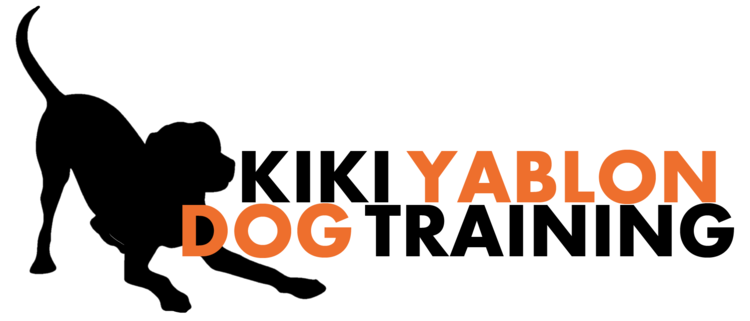Anthony starting to learn to pause and check in when the front door is opened. (Note: the front yard is securely enclosed, or else I'd be holding the leash.)
One of the first things I learned as a new dog owner was that I should never let my dog go out the door before me, lest she think she was the “alpha” in our “pack.”
This rationale is still quite prevalent, despite debunking across multiple disciplines. And unfortunately the corollary that you must prove that, no, you are the alpha leads to some pretty unpleasant ways of teaching and enforcing doorway protocol, among other things.
But let’s not throw the puppy out with the bathwater. There are a lot of perfectly valid reasons to teach your dog how to behave around an open door. Especially in the urban environment, there’s endless trouble a dog can run into by darting across the threshold before you’ve had a chance to scope things out. Every dog who lives in an elevator building, for instance, ought to learn how to wait before entering the car.
Fortunately, it’s easy to teach a dog what to do instead of dashing through an open door.
Start your lessons with a door that doesn’t lead anywhere dangerous or incredibly tempting. Put your dog on leash if you need to work at an exit that goes to an unsecured or particularly fun area, but keep the leash slack—think seat belt, not reins.
Open the door just a crack, or even simply touch the door handle, click or mark with a "yes," then toss a small treat your dog really loves on the floor behind the dog. Close the door and wait for the dog to eat and reorient. Repeat.
If you’re working at an elevator, push the call button, walk back 10 feet, and simply start feeding the dog just as the elevator door opens. Don’t walk toward or get on the elevator; just continue to feed until the door closes, then stop abruptly when it does. Repeat.
If your dog likes the treats you’re using, he’ll quickly start to make some associations:
- The door opening predicts treats, and
- Those treats will come from my human’s hands and/or appear a few feet behind me.
The treat delivery will start to change what your dog does when you open the door, or when the elevator opens. In most cases, he’ll start to plant his front feet, shift his weight backward, and/or look at you as the door opens.
Observe what he does that you like—whatever’s incompatible with running through the open door—and begin to mark it with your "yes" or your click before delivering the treat. The more specific you can be about what you mark, the faster the training will likely go.
When your dog has confidently offered this lovely behavior four or five times in a row, begin opening the door a little bit further. As the response becomes reliable at each new level, open the door incrementally wider.
If at any point the dog walks through the door, don’t click, don’t treat, and don’t head out for a walk. Simply invite the dog back inside to try again. If the dog fails once more, back up your criteria a little, use better reinforcers, or both.
When, as you open the door wide enough for the dog to move through, he chooses to plant his front feet or look at you instead, you can add a verbal cue, such as “wait.”
You don’t really need a verbal cue if you only want this behavior when you open a door—the door opening will become the cue to wait. But adding a verbal cue lets you quickly generalize this behavior to other doors, thresholds without actual doors, car doors, curbs, and other locations. You can even use it to stop your dog in his tracks with no doorway in sight—say, if he’s heading for a dropped item on the kitchen floor.
Pretty quickly after teaching the wait, you can also teach the dog that there’s a cue that means it’s time to go through the doorway. (I use "Okay!") Say the cue, then prompt and reinforce the behavior of moving out of position. At least initially, I use a treat or play as well as access to whatever’s on the other side of the door.
Here’s a video of Stella, a border collie mix, a former client of mine through Animal Behavior Training Concepts, responding to “hold up” and release cues taught earlier in the same session at an interior doorway. Because the release cue is an opportunity to earn the treat, giving the release cue reinforces the wait, and the click/treat that follows the release strengthens both the release behavior and the wait.
If your dog doesn’t pay attention to treats when there’s a chance to go through a door, that doesn’t mean this method won’t work for you. Reinforcement value is relative, and for Stella, when we took her “hold up” to an exterior door, the chance to go through the door trumped any food or toy we had to offer. So we used the reinforcers she told us she wanted—a win-win for dog and human.

